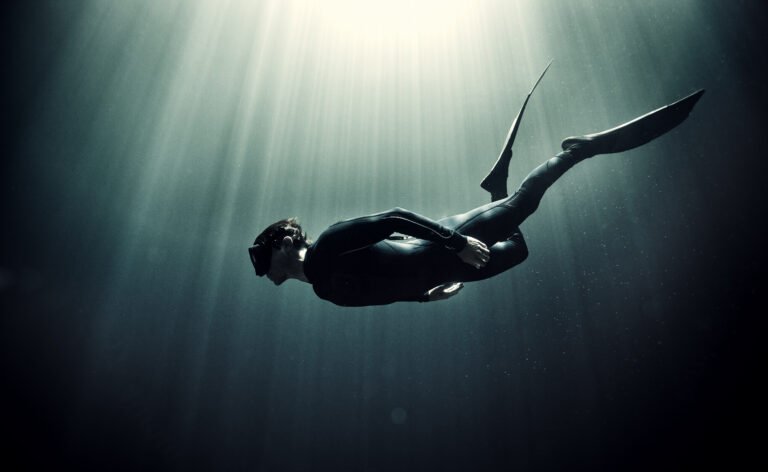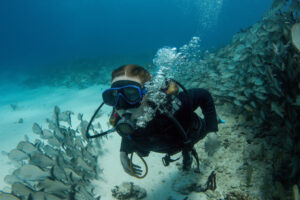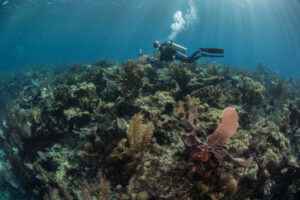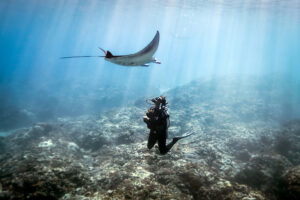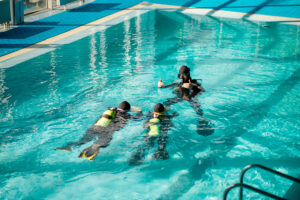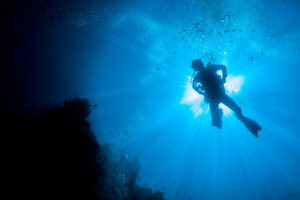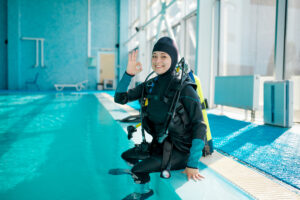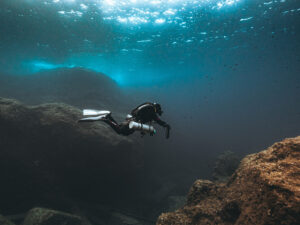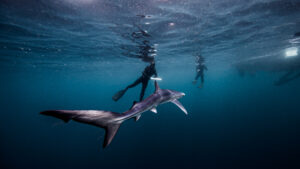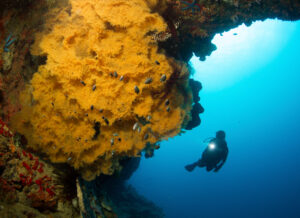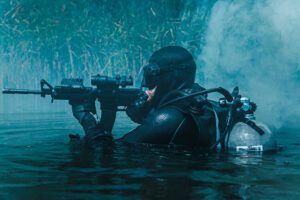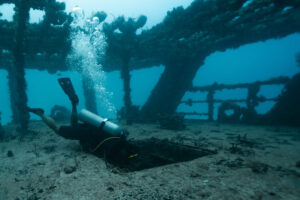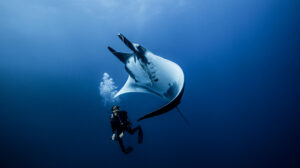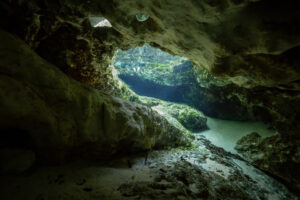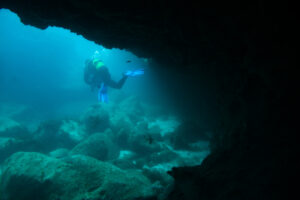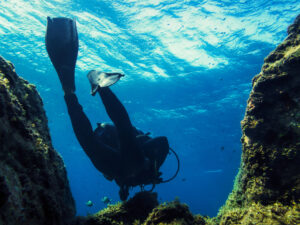What is Freediving?
Freediving, also known as breath-hold diving or apnea, is an underwater activity that involves diving without the aid of scuba equipment or artificial breathing apparatus. This unique and ancient practice combines elements of sport, meditation, and adventure. Unlike scuba diving, freediving relies on the diver’s ability to hold their breath for extended periods while exploring the underwater world. The art of freediving has evolved over millennia, with roots in traditional pearl harvesting, fishing, and underwater exploration.
History and Origins
The origins of freediving can be traced back thousands of years to ancient civilizations in the Mediterranean, Polynesia, and Japan. In ancient Greece, freedivers were known as ‘skandalopetra,’ named after the flat stone they used to descend rapidly to the depths of the sea. They performed various tasks such as salvaging shipwrecks, gathering sponges, and retrieving submerged valuables. Similarly, in Japan, Ama divers (predominantly women) have practiced freediving for over 2,000 years to collect pearls, abalones, and other marine resources.
Techniques and Disciplines
Freediving comprises several disciplines, each with its unique challenges and goals. Some of the most popular disciplines include:
- Static Apnea (STA): This discipline measures the diver’s ability to hold their breath for as long as possible while remaining stationary, typically on the water’s surface or submerged just below. STA is an excellent way to build mental focus, relaxation, and breathing control.
- Dynamic Apnea (DYN/DNF): In DYN, the diver swims horizontally, with or without fins, covering the greatest distance possible while holding their breath. DNF (Dynamic No Fins) is the same concept but executed without the aid of fins.
- Constant Weight (CWT/CNF): In CWT, the freediver descends and ascends along a guideline, wearing a weight belt to counter buoyancy. The diver must not adjust the weight during the dive. CNF (Constant No Fins) is the same discipline, but divers use no fins, relying solely on their strength and technique to propel themselves.
- Free Immersion (FIM): In FIM, divers descend and ascend by pulling themselves along a vertical guideline without using fins. This technique is often used by beginners to familiarize themselves with depth and equalization techniques.
- Variable Weight (VWT): In VWT, divers descend using a weighted sled and ascend using their fins or by pulling themselves up along the guideline. This discipline enables divers to reach greater depths with less effort.
Physiology and Training
Freediving pushes the human body to its limits, demanding physical strength, mental focus, and specialized training. Key physiological aspects of freediving include:
- Mammalian Dive Reflex: This innate response, present in all mammals, is triggered upon immersion in water. It slows the heart rate (bradycardia), constricts peripheral blood vessels (vasoconstriction), and shifts blood to vital organs (blood shift). These adaptations enable freedivers to conserve oxygen and tolerate increased pressure at depth.
- Hypoxic Training: Freediving requires divers to withstand periods of low oxygen (hypoxia) and high carbon dioxide (hypercapnia) levels. Training methods, such as breath-hold exercises, help improve a diver’s tolerance to these conditions.
- Equalization: As a freediver descends, increased pressure can cause discomfort or damage to air-filled spaces like the middle ear and sinuses. Divers must equalize the pressure by using techniques like the Valsalva or Frenzel maneuvers.
Safety and Risks
Freediving carries inherent risks, and safety is of paramount importance. Divers should always be trained, prepared, and adhere to safety protocols to minimize hazards. Some common risks include:
- Shallow Water Blackout: This occurs when a diver loses consciousness due to low oxygen levels in the brain, often close to the surface. Proper breathing techniques, buddy diving, and avoiding hyperventilation can help reduce this risk.
- Barotrauma: Inadequate equalization can lead to barotrauma, causing injury to air-filled spaces such as the middle ear, sinuses, and lungs. Divers should master equalization techniques and ascend slowly to prevent barotrauma.
- Decompression Sickness (DCS): Although rare in freediving, DCS can occur when divers spend extended periods at depth or perform multiple deep dives in a short period. To minimize the risk of DCS, divers should adhere to established depth limits, allow sufficient surface intervals, and avoid flying or high altitude exposure soon after diving.
- Hypothermia: Prolonged exposure to cold water can lead to hypothermia. Wearing appropriate thermal protection and monitoring dive duration can help mitigate this risk.
Equipment
While freediving does not require extensive equipment like scuba diving, some essential gear enhances safety and performance:
- Mask: A low-volume mask provides clear vision underwater and allows for easier equalization.
- Snorkel: A simple, J-shaped snorkel helps divers breathe at the surface before and after dives.
- Fins: Long, flexible fins improve propulsion, efficiency, and dive performance.
- Wetsuit: A well-fitting wetsuit provides thermal protection and buoyancy control.
- Weight Belt: A weight belt or neck weight counteracts buoyancy, enabling divers to descend more easily.
- Dive Computer: A freediving-specific dive computer monitors depth, dive time, surface intervals, and ascent rates, helping divers track their performance and adhere to safety guidelines.
Competitive Freediving
The sport of competitive freediving has grown in popularity, with organizations such as AIDA International and the International Freediving Association (IFA) overseeing competitions and maintaining world records. Competitions typically involve multiple disciplines, with athletes striving to achieve personal bests or break world records.
Conclusion
Freediving is an exhilarating and challenging activity that offers unique opportunities to explore the underwater world. By understanding its history, techniques, physiology, and safety measures, divers can safely push their limits and experience the beauty and serenity of the ocean on a single breath.

